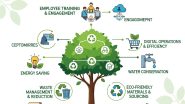You know your business plan inside out because you came up with it, but how do you think your team and investors will manage to understand each and every single thing that your plan consists of and revolves around? That’s when a business plan comes into play. But are you aware of what goes into making an effective business plan?
There are several kinds of business plans that are made to serve different kinds of purposes, some are made informally to familiarise the internal team, whereas some are extensive and coherent plans that are designed specially to be presented in front of your investors. In this article, we will introduce you to a basic outline of a business plan that you could refer to anytime. Let’s begin.
Executive Summary
The executive summary is just like a window that helps you take a sneak peek of what’s inside. A good executive summary will help you design the highlights of your business plan such as what is your product, what problem does it solve, who is your target audience, your financial projections, founding team, etc. An executive summary serves an investor the same purpose as a sample sized product serves you to help you decide if you want to buy the regular product. So remember to better be good at it for it’s the summary that decides if the plan goes into the bin or takes off the ground.
Shed Light On Scope And Opportunity
In a section called opportunity, you need to focus on why you are bringing your product or service into existence. What was the problem that sparked your interest and led you to birth this idea? Tell them what your product/service is all about, how different and better it is going to be from the competitors, and what is the solid solution that you are planning to offer. While writing this section, rather than bragging about the amazing features of your product, focus on the customer problems that are going to be solved by this product/service.
Market Analysis
All your claims would further need to be backed up by some actual facts and figures. These statistics should be about the target audience that you have designed your product/service for. This section should have all the details regarding who you are targeting as your customer base, where do they belong, what are their interests, why do they need this product, and what difference is your product going to make in the market. All in all, this part is where you will give a detailed account of the target audience and the demographics.
Financial Projections
This is a very important section that covers the financial aspect of your plan. It should tell about the sales forecast, profit and loss, balance sheet, cash flow, and all your assumptions and objectives. Also, don’t forget to highlight the financial needs to build up the business as in how much money is required to launch the business and where to plan on sourcing this money from.
Execution
An idea on its own has no value until it’s met with proper execution. This is what every entrepreneur needs to be wary of. Work on your manufacturing plan, sales plan, and that marketing plan that is actually going to help kick start the business and allow it to go on smoothly.
These are some very common points that could be found in almost all of the business plans. But it’s for you to decide which point you want to keep and which one you want to exclude depending on the requirement of your business and the audience. Leaving you with all this information, we wish you all the best with the business plan in making.


















